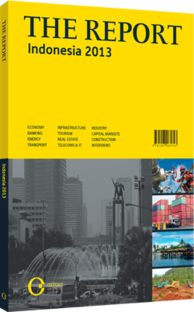Tiphone Mobile Indonesia: Prepaid card distribution
THE COMPANY: Established in 2008, Tiphone Mobile Indonesia (TELE) is the country’s largest nationwide prepaid and subscriber identity module card distributor for Telkomsel (TSEL), a subsidiary of Telekomunikasi Indonesia (TLKM) and XL Axiata (EXCL). Through 62 branches, 79 outlets and 48 owned shops, TELE currently manages 35 of TSEL’s clusters (around a 12% market share) and 25 EXCL’s clusters (about an 8% market share), bringing aggregate industry market share to around 8%. Sales of prepaid cards account for some 90% of TELE’s total revenues.
TELE utilises three distribution channels to sell vouchers and prepaid cards. These are owned dealers, resellers and modern outlets, such as Alfamart. Currently, TELE has 48 owned dealers and more than 175,000 resellers across Indonesia.
TELE is also a player in the mobile phone distribution business through Telesindo Shop, which it acquired in 2011. Although Telesindo distributes well-known and popular brands such as Blackberry, it focuses on its in-house brand Tiphone, which is a low-end smartphone equipped with the latest technology that is manufactured in China and sold at an average selling price (ASP) of Rp200,000 ($20). With Telesindo’s 50 shops in Jakarta and the greater Jakarta region, mobile phone sales represent around 10% of TELE’s consolidated revenue.
DEVELOPMENT STRATEGY: In the third quarter of 2013 TELE plans to acquire the second-largest EXCL prepaid card distribution company, which will increase TELE’s market share to around 15% for EXCL. TELE will spend Rp100bn ($10m) for this acquisition and receive additional revenue of Rp1trn ($100m) in return.
In the first half of 2013, TELE aims to acquire MTS, a company importing Apple products for TSEL and Megafon, a Samsung distribution company for the Jakarta and Greater Jakarta area. Both acquisitions will cost TELE around Rp400b ($40m). With the success of the iPhone 5 and Samsung mobile phones in Indonesia, TELE expects to sell 150,000 Apple product units with ASP of Rp8m ($800) and 750,000 Samsung product units with ASP of Rp2m ($200), giving a 2013 blended ASP of Rp1.03m ($103), including Tiphone. This acquisition will bring TELE’s 2013 mobile phone revenue to Rp3.7trn ($370m), up 378% year-on-year. Mobile phones generate higher margins than prepaid cards, showing a slight improvement in TELE’s 2013 gross margin of 6.3%, up from 6.2% in 2012. With these acquisitions, mobile phone revenue contribution will increase to 30% in 2013.
FORECAST: In the first half of 2013, TELE also aims to enter the electricity market by providing prepaid cards for electricity payments in cooperation with the state-owned electricity company PLN and banks. As PLN no longer issues post-paid electricity meters under 41.5 KW for households, strong growth is expected in TELE’s electricity prepaid card business, despite its smaller gross margin of 2%. There were 6.5m prepaid household electricity (“listrik pintar”) subscribers in 2012, representing just 12% of total prepaid electricity subscribers. This allows for future growth, with PLN planning to double subscribers to 13m in 2013, helped by continued growth in the mid to low-end housing segment and the migration of post-paid subscribers to prepaid methods.
To be more competitive, TLKM aims to reduce its prepaid card distributors to 50 in 2014 from 97 in 2012, already down from around 300 in 2009. Therefore, TELE will experience organic growth stemming from additional top-up quotas, as smaller players are forced to close down. In addition, this new policy will provide TELE with inorganic growth opportunities, as the company will have the ability to buy out weaker cluster owners who are forced to sell out. On valuation, despite its share price having outperformed the market by 97.5% in 2012, TELE still trades at an attractive 2013 price/earnings (PE) ratio of 12.6x and PE to growth ratio of 0.3x. Going forward, TELE should continue to outperform the sector with above-average earnings per share growth of 40.5% in the 2012-13 period.
You have reached the limit of premium articles you can view for free.
Choose from the options below to purchase print or digital editions of our Reports. You can also purchase a website subscription giving you unlimited access to all of our Reports online for 12 months.
If you have already purchased this Report or have a website subscription, please login to continue.

